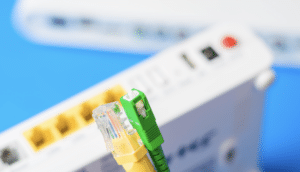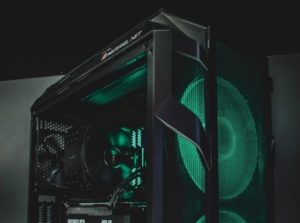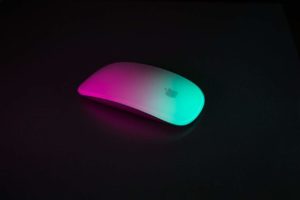Surely you know that too: the housework has to be finished urgently, but your computer is letting you down mercilessly! Panic sets in and rational thinking becomes increasingly difficult. Now it's time to keep a cool head and go troubleshooting.
Most of the time it is just a "banality" and can be easily remedied (by yourself). Here in our guide we will explain the various causes of errors and how you can “get your box going again”. Enjoy reading the tips!
Cause research PC does not work
With this checklist, you can rule out the most common causes of a PC not starting up in advance and maybe find the error right away.
- The first immediate measure: Switch that first Power Supplies off, press your computer's power button and wait about a minute. After that, you can turn the power supply back on and try to restart the PC.
- Next, check the power supply. Are all cables properly connected? Are the power strip and power supply turned on? You can also try plugging another device into the same circuit to see if the current is flowing.
- You can also open the computer and check that all the cables are properly seated. You can also use your nose to check whether something smells burned or charred or is obviously defective. In this case, you should take the computer to a specialist.
- Did you maybe just recently install new components in your PC? Remove them again and test whether your computer starts again. If the PC runs or starts up again, you can assume that these new components were to blame for the PC not starting.
Identifying the cause of hardware problems
If the hardware is defective, the entire PC usually no longer starts. With a few simple tips, you can easily identify which is the component that is faulty.
- gives your mainboard after switching on sounds from itself, then you can research them. You can find a list of all common error codes on the Internet.
- Another reason can be the power supply - it could be too weak. If you have only recently installed a new hard drive or other components, it may be that your power supply is simply not powerful enough. If that's the reason, then it's best to see a professional.
- Also, when your systems are overheating, it can happen that your PC just turns off. Check your computer for dust, this can be the reason. Therefore, remove the dust and dirt regularly.
- Inspect the inside of his computer, because it could turn off because the electrolytic capacitors (electrolytic capacitors) are defective. To do this, you have to open the case of your computer and take a close look at the mainboard or the graphics card. If the electrolytic capacitors turn out to be defective, the only thing left to do is to replace the relevant component.
- Listen for unusual noises from your PC. Do you hear soft knocking noises? This could be a sign that your hard drive is about to say goodbye. If, on the other hand, you hear a loud bang, this can indicate a burst electrolytic capacitor. On the other hand, a fan that constantly turns too high suggests that the temperature is too high.
Look for errors in the mainboard
If you have ruled out the power supply unit as the cause of the problem, then take care of your computer's motherboard next. First look for visible defects and damage - these can be the aforementioned signs of a charred component or swollen voltage regulator capacitors next to the CPU. If you can't find anything there visually at first glance, it can be helpful if you remove the mainboard.
Short circuits often occur here, for example due to bent sheet metal and loosened screws that have fallen behind the motherboard. Here it is up to you to build the system back until it only has the most necessary parts on the motherboard.
This should be the processor, a RAM module in slot 1 and a graphics card (if there is no graphics chip on the mainboard). If you do not get your system to react with this step, but everything is ok with the power supply unit, your motherboard is probably defective. Modern mainboards make it much easier for you to diagnose errors with debug LEDs on the board.
A two-digit display shows a POST code when you turn on your system, which provides information about its status and possible errors. The mainboards also emit acoustic signals when they are switched on via the bios in order to report problems via beep codes. If you want to learn more about it, you can find great articles on https://technik-buddy.de.
Be careful when working with electricity
Despite all the analysis, diagnosis and troubleshooting, you must never forget that you are dealing with high voltage here. For this reason, opening the power pack is not easy even for computer cracks. Even if the power supply is unplugged, there is still a risk of electric shock. This is due to the built-in capacitors - these are still under high voltage for a long time. Because the built-in capacitors are still under high voltage for a long time.








